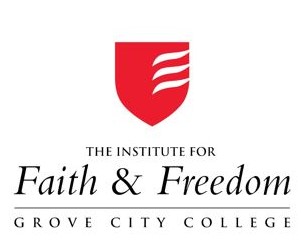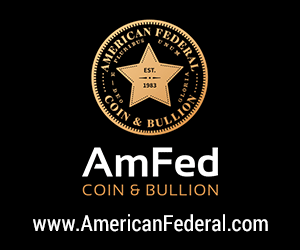The Perils of Tax Rate Nostalgia
Americans have always reveled in nostalgia about the music, fashion or favorite foods of bygone eras, but a sudden yearning for the high tax rates of yesteryear represents a startling new development. While some opinion leaders pine openly for the tax system that once claimed a big majority of income from top earners, their cozy, communitarian vision offers a deeply distorted view of those good old days.
In his defiant “Twinkie Manifesto,” professor Paul Krugman, Nobel Prize winner in economics, affectionately cites “the ’50s — the Twinkie Era” for “lessons that remain relevant in the 21st century.” He particularly applauds the fact that “incomes in the top brackets faced a marginal tax rate of 91%,” and later 70% in the 1960s. He associates that policy with “spectacular, widely shared economic growth: Nothing before or since has matched the doubling of median family income between 1947 and 1973.”
A group called New Hampshire Labor News, self-described “union members and activists,” similarly praised the golden year of 1952 on the Daily Kos, featuring the headline “Tax Policy: Time to Go Back to the Future?” At the Huffington Post, Dave Johnson has been pushing old-time tax rates for years, including an earnest offering entitled “14 Ways a 90% Top Tax Rate Fix Our Economy.” Meanwhile, Krugman’s fellow columnist at the New York Times, Nicholas Kristof, recently caught the fever to punish the rich with grandpa’s tax rates since “half-a-century of tax cuts focused on the wealthiest Americans leave us with third-rate public services.” As Congress careens toward the dreaded “fiscal cliff,” I’ve also been deluged by callers to my radio show who wistfully recall the higher top taxes of the Nifty Fifties as an instant cure for the current crisis.
The problem with this odd wave of high tax nostalgia is that it ignores one crucial fact about the Eisenhower era: higher rates on a few wealthy taxpayers didn’t produce higher revenues and the overall tax burden on the public was actually lighter, not heavier, than it is today.
Official federal figures show that in the last three years of the Eisenhower administration (1958-60), tax payments to government at all levels averaged 28% of the gross domestic product. Today, that number tops 32%, with further increases anticipated for 2013-14. Complaints about “third rate public services,” in other words, have no connection to reduced resources for federal, state or local bureaucracies.
Even separating the federal tax system from local and state spending, the government in Washington alone takes a bigger total bite out of the national paycheck than it did in the warmly remembered Leave it to Beaver era. In the ten years 1950-1959, annual direct revenues to the feds averaged 17.2% of GDP; in the comparable period of the Bush-Obama era (2000-2009), even with tax cuts and economic collapse, that figure was 17.7% of GDP.
How could the federal government grab a bigger share of national income when top marginal rates had fallen by nearly two thirds from their high point under Ike?
For one thing, the theoretical top rates applied to almost no one – with estimates that only 0.01 % of 1960s taxpayers officially qualified to pay Uncle Sam at the highest level. Today, by contrast, the wealthiest portion of the population is far larger, with today’s two top categories (households on which President Obama wants sharp rate increases) amounting to nearly 3% of all taxpayers. In other words, with far more rich people paying into the tax system, you can get more money even with far lower rates.
Moreover, the new rich pay a much bigger share of the total tax burden than the old rich ever did. In the good-old-days of 70% top rates, the richest 5% of taxpayers covered barely half of the 60 % share of income taxes that they pay today; the bottom half of households paid more than double the tiny portion of the total tax bill (below 3%) that they fund now.
Conservatives have long argued that lowering tax rates boosts revenues – by giving taxpayers less incentive to try to hide their income, or practice sophisticated but unproductive strategies of tax avoidance. Reagan cut the top rate nearly in half in 1986 (from 50% to 28%) but the next five years brought meaningfully higher revenue (in actual dollar terms and also as percentage of GDP).
The oddest aspect of the nostalgia for high taxes involves the failure to consider the other half of any fiscal equation: the levels of government spending. Krugman and kindred strongly suggest that lower tax rates led inexorably toward reduced levels of government services, public sector investments, and other common goods. But the numbers tell a different story.
In 1956, the very heart of the post war boom (and the year of Ike’s landslide re-election), the federal government’s total outlays came to 16.5% of GDP; this year, Uncle Sam is spending an unprecedented 24.3, the highest figure in the 67 years since World War II. While leading lights of the left complain (with considerable justification) about greater inequality and reduced social mobility, they can’t blame those problems on lower levels of government spending. Washington pays out more than ever in every major arena other than defense (where expenditures were higher in the ‘60s through the 80s), and countless expensive new programs (Medicare, Medicaid, Food Stamps, Obamacare) have been launched since the ‘50s without replicating that epoch’s admirable growth.
Those who express their fervent longing to return to the days of 90% tax rates would never welcome the lower levels of revenue or spending that went along with them. Like most dreamers who wallow in nostalgia, they obsess on one cherished, charming element of the past without acknowledging the inconvenient truths that surrounded it.
A version of this column appeared originally in USA TODAY.




















